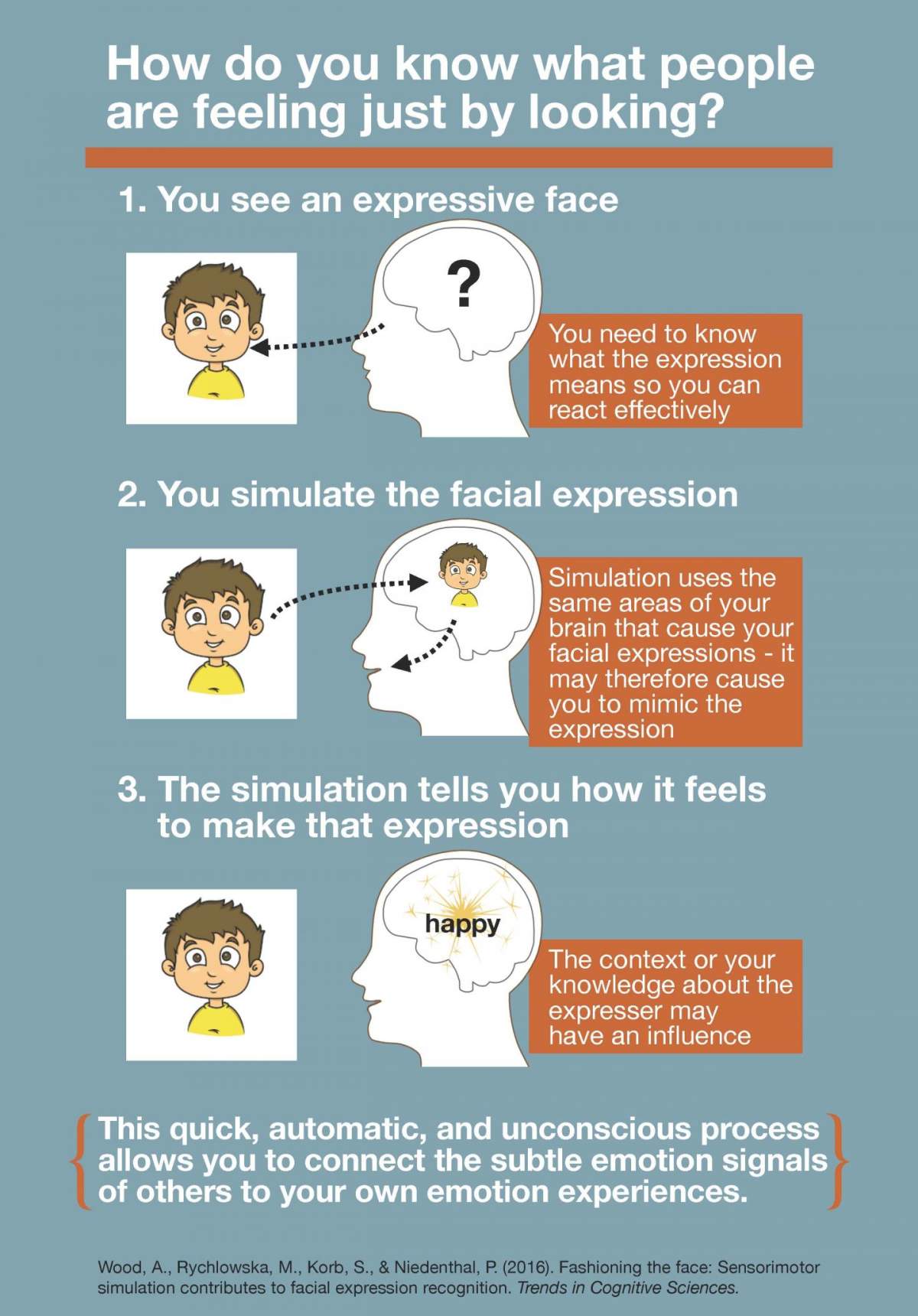When your girlfriend gives you a big, wide smile, you can’t help but smile back. When she’s in tears, your heart wrenches and your frown matches the pain written across her face.

There’s a reason why smiles – and facial expressions, in general – are contagious, scientists say. In the latest research, they suggest mirroring others’ facial expressions is key to our survival and ability to empathize.
There are 42 muscles in a human face – that makes for plenty of different combinations we can contort our faces into.
“Our faces are very malleable and plastic so we can produce hundreds of facial expressions. They’re subtle, fleeting and ambiguous. It feels so easy to recognize what people are feeling but it’s actually a challenging task,” according to lead author, Adrienne Wood, a social psychologist at the University of Wisconsin.
“In order to recognize the facial expressions and emotional expressions we see, we recreate what it feels like to do that facial expression and we refer to that stimulation to understand what the person in front of us is feeling and what their intentions are to you. Then you know how to respond appropriately. This is all happening without you even thinking about it,” Wood said.
Wood calls it “facial mimicry” – an instinctive response to reading the emotions we are fed from other people. We do this in a matter of a few hundred milliseconds. It helps us decide whether to comfort someone, give them space or even back away.
READ MORE: Feeling violent around adorable puppies? ‘Cute aggression’ is real, scientists say

Get weekly health news
In previous research, scientists placed skin cleansing masks on volunteers so that when they dried, it was harder to move their faces around.
In those instances, people had reduced accuracy in reading facial emotions. Similar findings are reported in people who lose their ability to move the muscles in their faces, such as those with paralysis, Bell’s palsy or even nerve damage from plastic surgery or Botox.
They lose their ability to recognize and “share” others’ emotions.
(The researchers note that for those who were born with some type of paralysis, the effects are different. If you’ve never had the ability to mimic facial expressions, you’ve carved out other ways to compensate and read emotions.)
Being able to read and mimic facial expressions is crucial, Wood says. Humans are one of the most social species and we need to be able to quickly and accurately piece together what others are thinking and feeling.
Our brains are not separate entities from our bodies, either. The nerves that make your facial muscles and body move are an extension of your brain.
READ MORE: The Olympic victory stance – the universal sign of pride or dominance?
“Smiling will change your body’s nervous system in a way that fits with happiness. You’ll exude happiness just like you can exude sadness. This is the building block of empathy,” Wood explained.
Body language is pretty universal, too. Remember the infamous “unimpressed face” made by 2012 Olympic gymnast McKayla Maroney as she stood at the podium donning a second-place silver medal?

In a study out this month, Ohio State University researchers tasked 150 college-aged students to look at a handful of faces to pick out terms like “no” and “I do not agree.”
Native language – English, Spanish, Mandarin and even American Sign Language – didn’t matter. Study participants knew they were looking at a face of disapproval when they saw one.
“To our knowledge, this is the first evidence that the facial expressions we use to communicate negative moral judgment have been compounded into a unique, universal part of language,” the researchers said.
Read Wood’s full findings were published in the journal Trends in Cognitive Sciences.
carmen.chai@globalnews.ca
Follow @Carmen_Chai



Comments